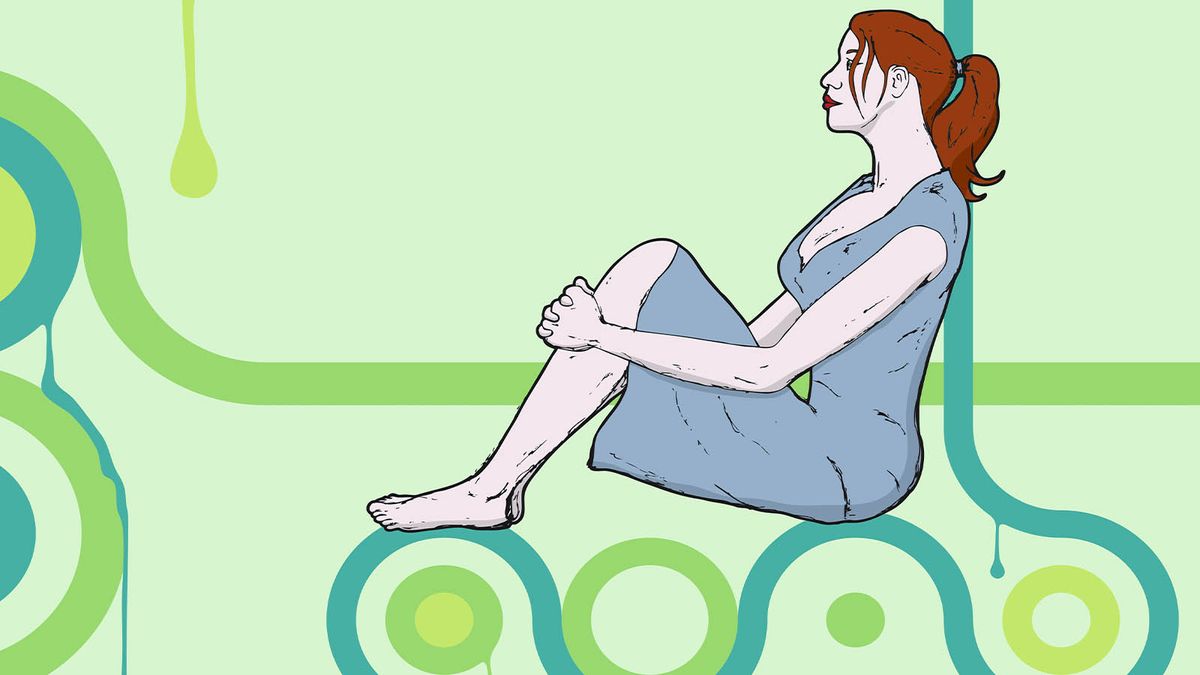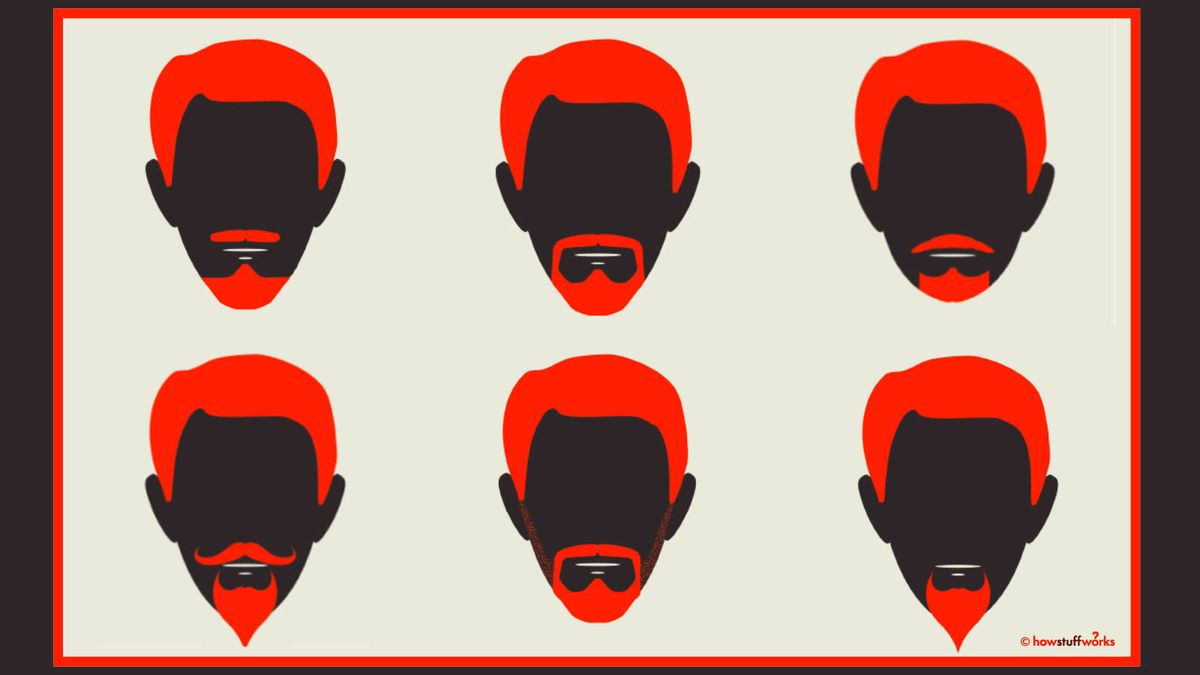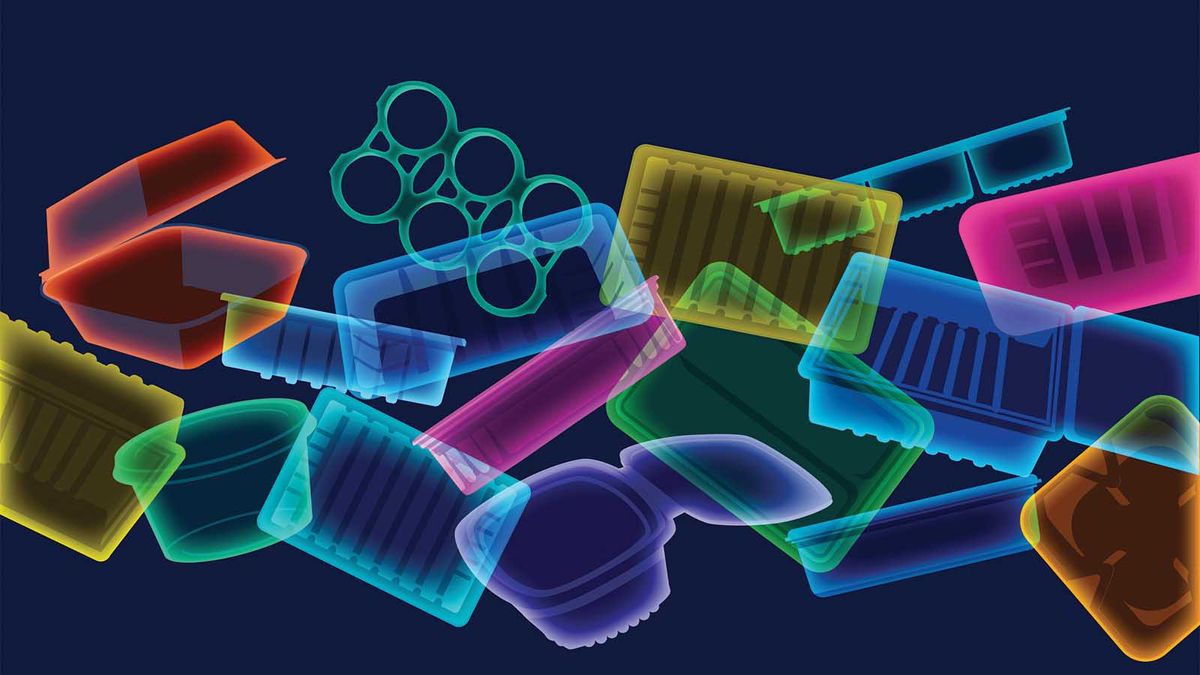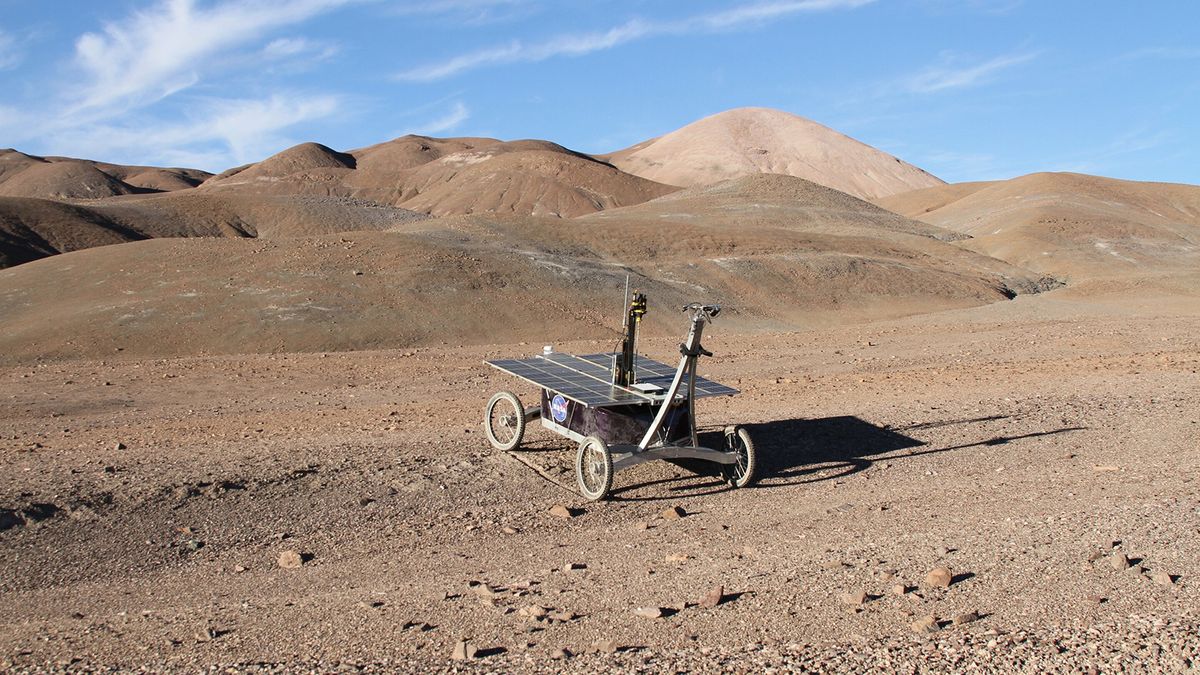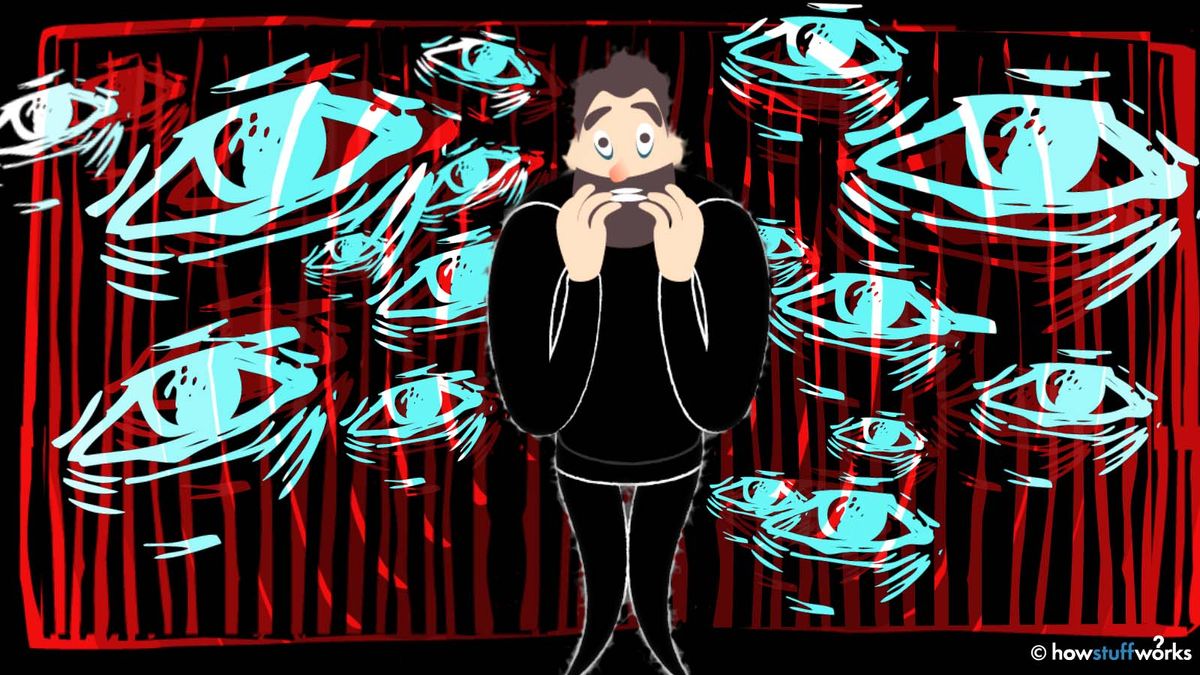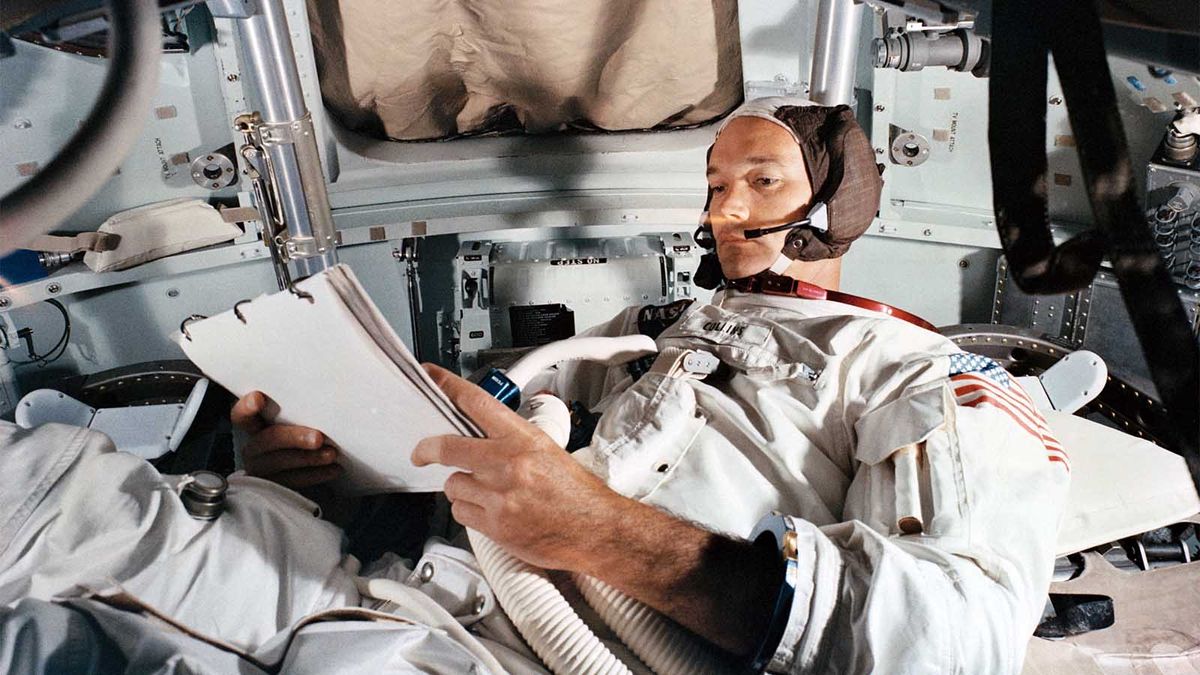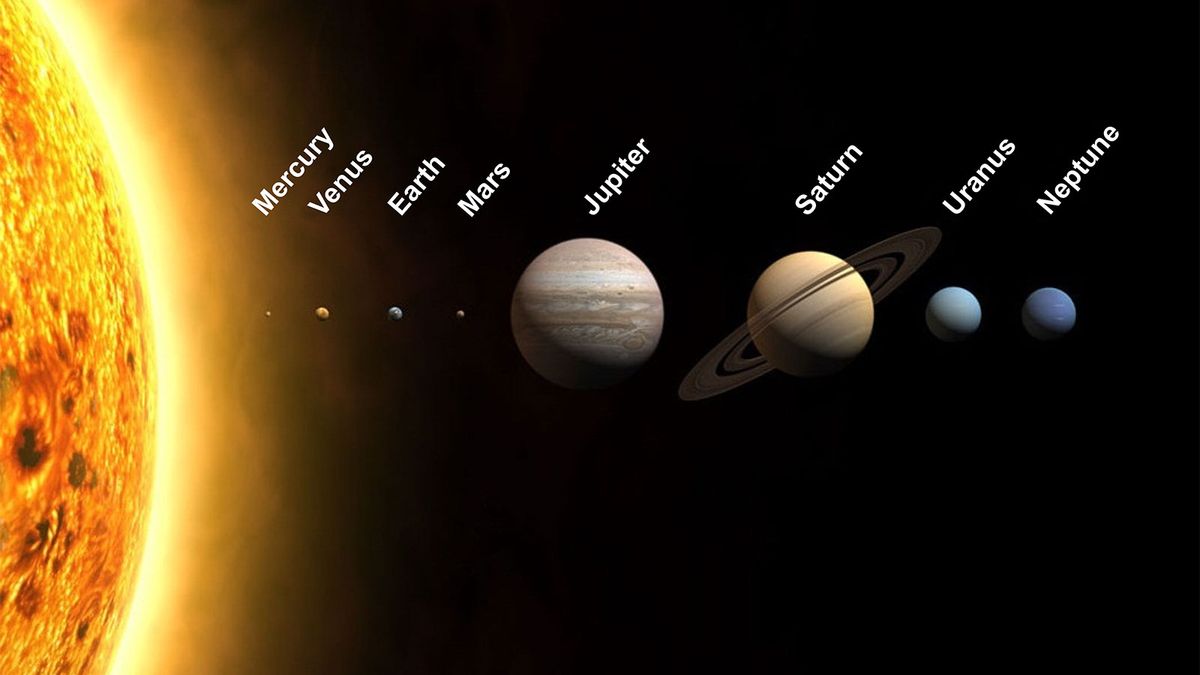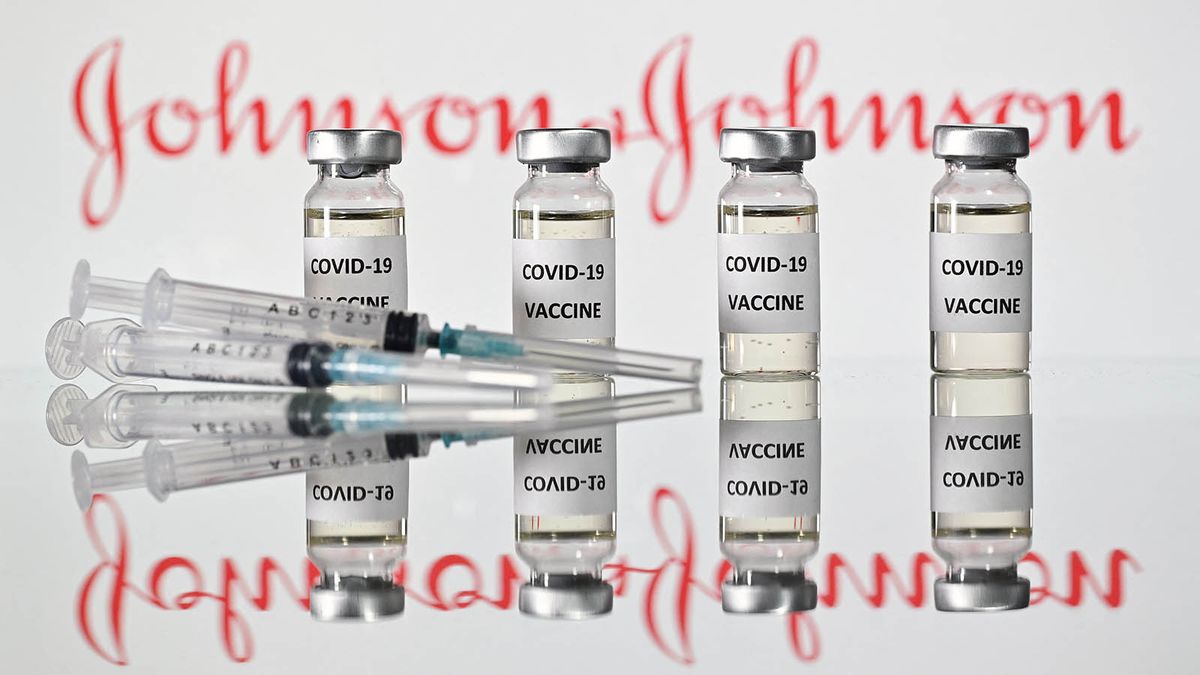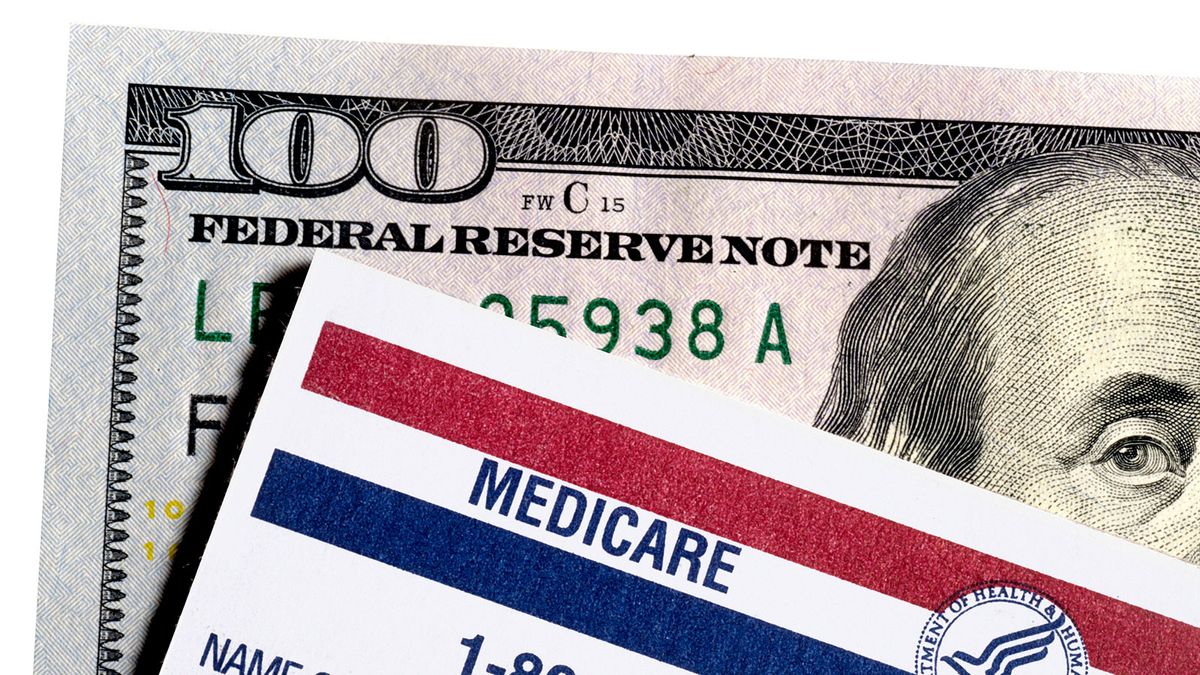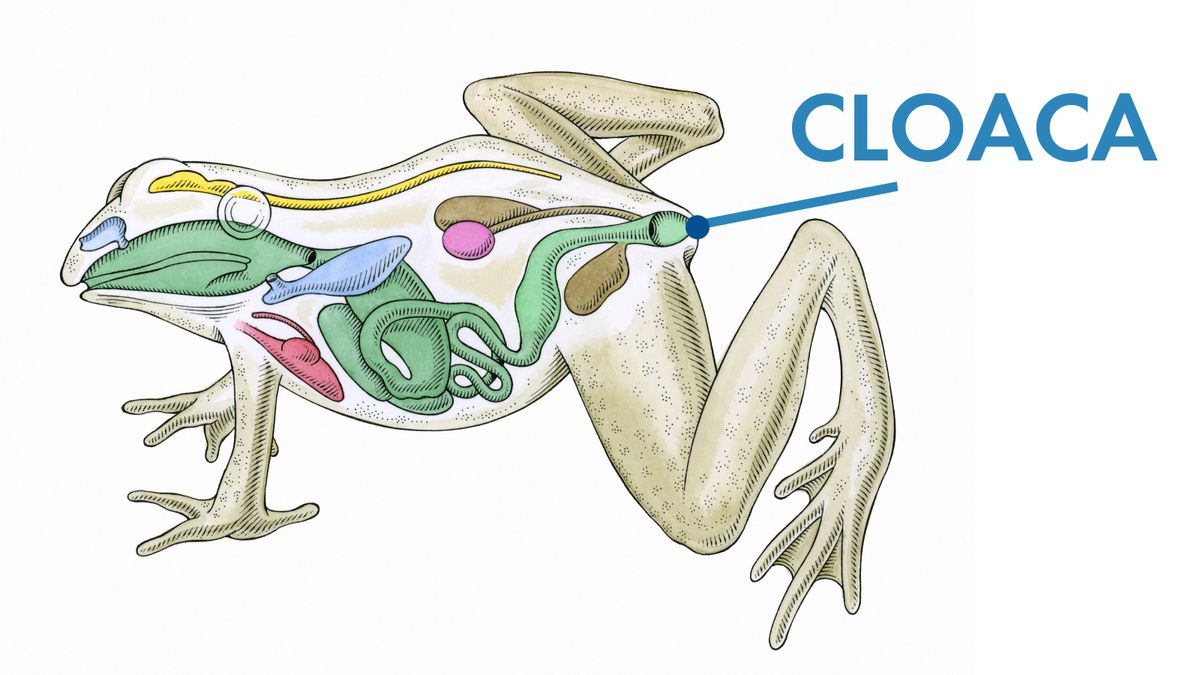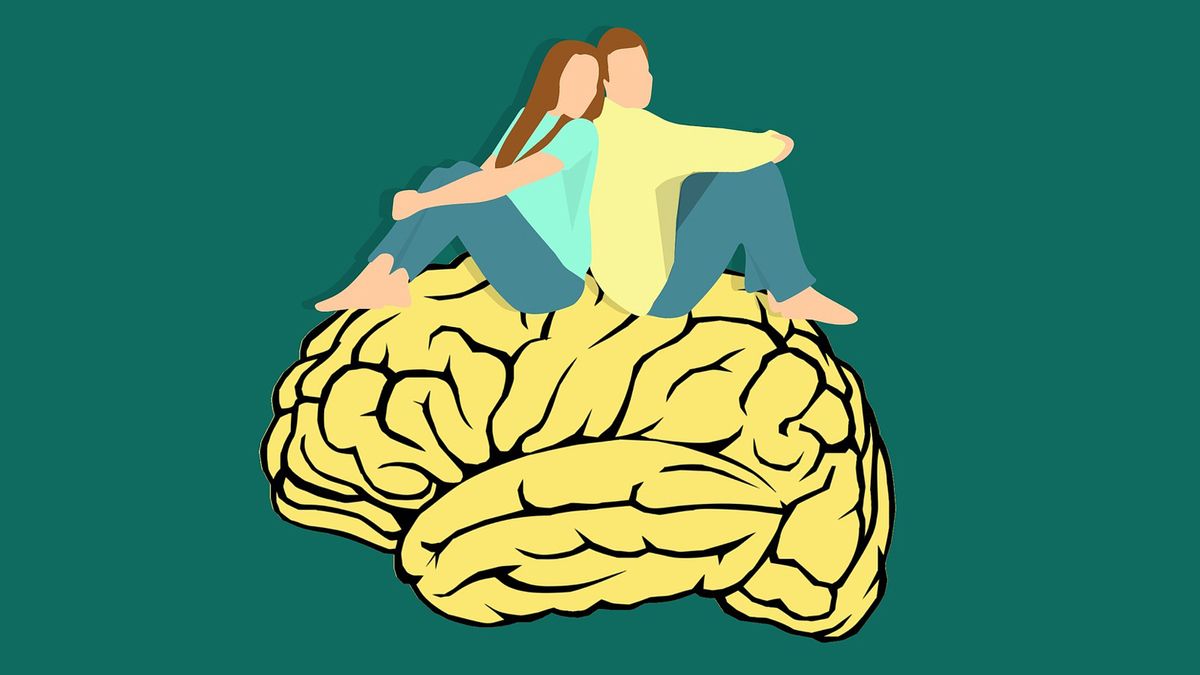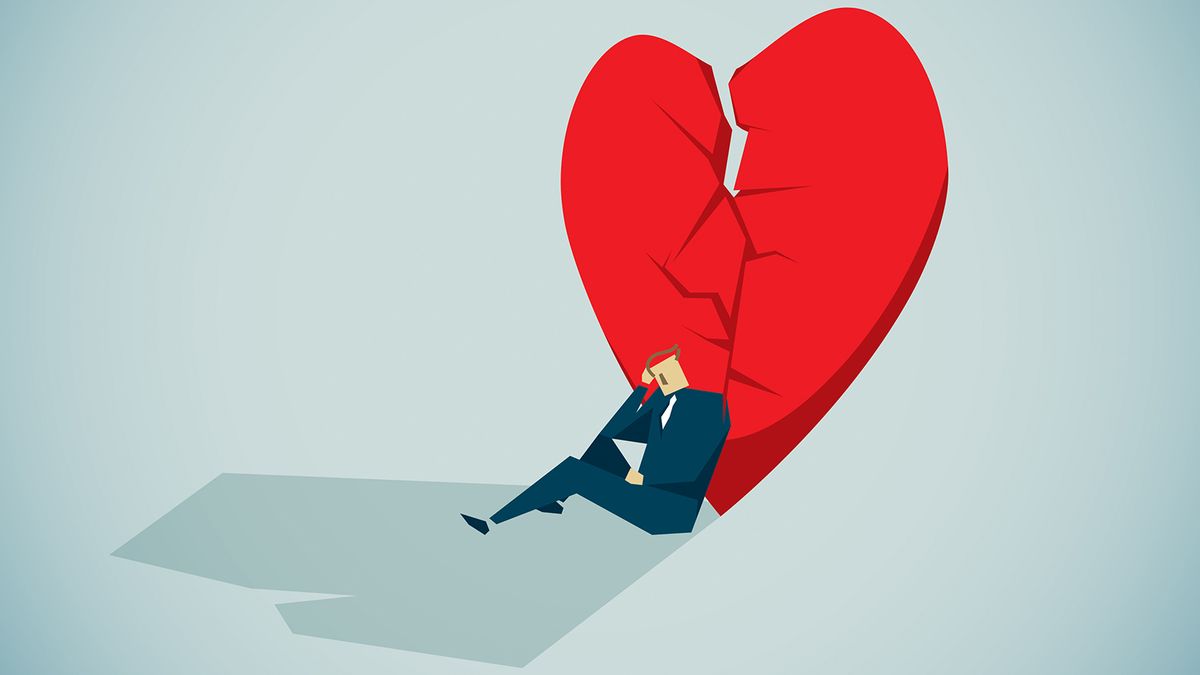
Помните, когда Microsoft была плохим парнем, а Apple — аутсайдером? Забавно, как гениальная идея может изменить все. Благодаря бешеному успеху iPhone , линейки продуктов iPod и iTunes теперь вы найдете почти столько же людей, которые разглагольствуют об Apple, чем о Microsoft. Там, где один человек видит самую крутую комбинацию для удара по электронике с тех пор, как TiVo познакомился с телевизором , другой видит планы мирового господства. И все дело в одном слове: контроль.
В этой статье мы увидим, что делает iTunes самым популярным программным обеспечением для музыкальных автоматов в мире, рассмотрим некоторые из его более продвинутых функций, изучим интегрированный iTunes Store и выясним, почему вся эта установка вызвала несколько судебных исков и эпических хакерских войн. Во-первых, давайте рассмотрим основы.
iTunes — это программа, которая позволяет добавлять, упорядочивать и воспроизводить вашу цифровую медиа-коллекцию на компьютере, а также синхронизировать ее с портативным устройством. Это музыкальный автомат, похожий на Songbird и Windows Media Player, и вы можете использовать его на компьютере Mac или Windows. Самым существенным отличием iTunes от некоторых других медиаплееров является встроенный iTunes Store (где вы можете получить подкасты , приложения для iPhone, iPad и iPod touch, музыкальные клипы, фильмы, аудиокниги и телешоу) и его многоуровневый интеграция с iPhone от Apple и его портативным медиаплеером iPod .
Но портативный медиаплеер — не единственный способ насладиться контентом iTunes. Во-первых, это ваш компьютер с Mac OS X или Windows — если у вас есть звуковая карта и комплект динамиков (а у вас, вероятно, есть), это все, что вам нужно для использования iTunes. Есть также популярный выход Apple на рынок смартфонов — iPhone. Или вы можете воспроизвести свою медиатеку iTunes на одном из немногих телефонов, авторизованных Apple для доступа к услуге, например на телефоне Motorola ROKR E1. Некоторые предприимчивые хакеры создали приложения, которые позволяют синхронизировать продукты сторонних производителей с iTunes, но они не поддерживаются Apple и могут работать не со всеми версиями iTunes. Центр беспроводной сети Apple , AirPort Express, позволяет передавать по беспроводной сети музыку iTunes с компьютера на динамики домашнего кинотеатра, подключенные к концентратору. С этой настройкой вы управляете воспроизведением через свой компьютер, iPhone, iPad или iPod touch.
С другим потоковым приемником iTunes, сетевым музыкальным проигрывателем Roku SoundBridge , вы управляете всем с помощью пульта дистанционного управления SoundBridge . Таким образом, когда дело доходит до воспроизведения, вы не ограничены каким-либо одним вариантом. Но вы можете быть ограничены типом вашего проигрывателя и возможностями вашей компьютерной системы. У вас также могут возникнуть трудности с отслеживанием одного из этих устройств; Roku больше не продает юниты [источник: Roku ]
Затем узнайте о совместимости iTunes с вашим компьютером и MP3-плеером.
- Совместимость с iTunes
- Программное обеспечение iTunes
- Расширенные функции в iTunes
- Интерфейс iTunes
- ITunes магазин
- Безопасность в iTunes
- Айтюнс и Фэйрплей
- iTunes и управление цифровыми правами
- Будущее iTunes
Совместимость с iTunes

Совместимость с iTunes в области портативных плееров вызывает затруднения, что является одной из причин, по которой некоторые люди просто полностью избегают iTunes. Программное обеспечение iTunes для Mac можно использовать, например, с MP3-плеером Creative Nomad ( полный список см. в разделе «iTunes для Mac OS X: совместимые плееры »). Но iTunes для Windows поддерживает только серию iPhone, iPad или iPod — если вы подключите Creative Nomad к компьютеру с Windows, на котором работает iTunes, программа его не увидит. Также нет версии iTunes для компьютеров с Linux. Но есть способы обойти это — просто выполните поиск в Google по запросу «iPod Linux hacks». Более того, Apple больше не обновляет список совместимых плееров, что может означать, что iTunes не будет поддерживать новые плееры, не принадлежащие Apple, в будущем.
С момента появления iPhone Apple больше не поддерживает iTunes для новых телефонов других производителей. Стратегия Apple заключается в том, чтобы убедить потребителей покупать продукты Apple и использовать их вместе с сервисами Apple. Компания не облегчает вам использование iTunes с любым устройством, не принадлежащим Apple. Некоторые компании, такие как Palm, пытались обойти закрытую систему Apple, но были закрыты в последующих обновлениях iTunes.
Таким образом, iTunes (или, по крайней мере, версия для Mac) поддерживает другие плееры, помимо iPod. Но здесь все еще сложнее: старая музыка, загруженная из iTunes Store, защищена форматом управления цифровыми правами (DRM) Apple FairPlay, который является проприетарным, защищенным форматом файла AAC, который Apple никому не предоставляет по лицензии. Единственные устройства, которые могут воспроизводить эти файлы, — это устройства с возможностью расшифровки Apple DRM, включая ваш компьютер с iTunes, iPod, iPad, iPhone, телефон iTunes и ваши динамики, подключенные к AirPort Express. (Вы не можете воспроизводить их на SoundBridge Roku, потому что Apple лицензировала Roku программное обеспечение iTunes без расшифровки DRM.)
Чтобы воспроизвести файлы iTunes Store с DRM на портативном плеере, кроме iPod, необходимо сначала записать их на CD или DVD в виде файлов MP3 . Кодировка DRM не попадает на диск. Затем вы копируете незащищенные файлы обратно в свою библиотеку iTunes и загружаете их в плеер. В качестве альтернативы вы можете выкупить песни по сниженной цене, чтобы получить версию без Fairplay. Песни, приобретенные в iTunes Store в формате iTunes Plus, не содержат DRM, поэтому вам не нужно выполнять этот шаг.
Итак, теперь мы знаем, какие устройства будут и не будут работать с программным обеспечением iTunes. Далее мы узнаем, что вы можете сделать с программным обеспечением, если у вас есть правильное оборудование (или неправильное оборудование с правильным хаком).
Системные Требования
Мак
Mac OS X v10.5 или новее
Процессор с тактовой частотой 1 ГГц или выше (G4 Mac или лучше)
QuickTime 7.6.4 или новее
1 ГБ оперативной памяти для воспроизведения HD-видео
16 МБ видеопамяти для HD-видео
200 МБ дискового пространства
Широкополосный доступ в Интернет (для использования iTunesStore)
Окна
Пакет обновления 2 для Windows XP или выше
200 МБ дискового пространства
Процессор Intel Core 2 Duo с тактовой частотой 2 ГГц или более быстрый для воспроизведения HD-видео, iTunes LP или iTunes Extras
Видеокарта, совместимая с DirectX 9.0, с объемом видеопамяти не менее 32 МБ.
Разрешение экрана 1024 x 768 или больше
Аудиокарта, совместимая с QuickTime
1 ГБ оперативной памяти для воспроизведения HD-видео, iTunes LP или iTunes Extras
Широкополосный доступ в Интернет (для использования iTunes Store)
Программное обеспечение iTunes
Даже если вы никогда не сделаете ни одной покупки в iTunes Store, вы все равно сможете воспользоваться основными функциями iTunes. iTunes предлагает все функции, которые мы привыкли ожидать от медиаплеера высокого уровня:
- Audio-file playback: iTunes supports AAC, AIFF, Apple Lossless, MP3, WAV, Audible.com's .aa format and unprotected WMA audio formats.
- Streaming music: You can open a stream in iTunes just by entering the URL in the "Open Stream" dialog box.
- Internet radio: You can set Internet radio presets.
- Graphics: You can view audio-coordinated graphics on-screen and print jewel-case art for your burned CDs.
- CD track information: iTunes automatically displays all available CD information when you insert a disc into the drive. You can also edit the information if it's incomplete or wrong.
- Organization and management tools: iTunes offers automatic and manual management options for your library.
- File-type conversion: iTunes will convert your AAC, AIFF, Apple Lossless, MP3, WAV or unprotected WMA files to AAC, AIFF, Apple Lossless, MP3 or WAV format.
- Playlist creation
- Burning and ripping CDs
- Downloading files to a portable player
- Sharing music over a network
What's a Podcast?
A podcast is an audio (or sometimes video) broadcast that you can download via the Internet and subscribe to so your computer automatically downloads all new episodes served up by that podcaster. You can listen to it on your computer or download it to a portable media player. Lots of podcasts are homemade, put together on a home PC and loaded up to a server for distribution. Many bloggers now produce their own podcasts. Some podcasts are professional-grade recordings put out by organizations like .com, Discovery Channel, NPR, PBS and The Onion. See How Podcasting Works to learn more.
You can subscribe to a podcast directly through iTunes. Just click "Subscribe to Podcast" and type the podcast's URL in the dialog box that pops up. You'll automatically receive all new podcasts from that broadcaster.
Advanced Features in iTunes
In addition to the typical jukebox functions, iTunes offers some nice advanced features:
- Ping: The newest major feature in iTunes is Ping, Apple's attempt at inserting a social networking element into iTunes. With Ping, you can follow your favorite artists and see what music they like or get the early word on albums, releases and concerts. Your friends can follow you and learn more about the music you enjoy. Apple includes links to make it easier to purchase music you discover.
- Autosyncing: iTunes will not only detect an iPod, iPhone or iPad, but will also automatically download all content you added to iTunes since the last sync (you can set it to manual mode if you don't want iTunes to transfer everything). Your iPod will also upload to iTunes any new song ratings or playlists you created directly on your iPod (but not any songs you added -- if there's a song on your iPod that isn't in your iTunes library, say goodbye to it when you autosync). The problem with autosync is that it syncs blindly -- if, for instance, you clear out your iTunes library for some reason, and you then connect your iPod to your computer, the autosync will wipe everything off your iPod to make it look just like your iTunes library. To avoid this, just turn off autosync.
- Smart Playlists: You can set parameters for iTunes to create a playlist for you using songs from your library. Parameters can be the song's genre, date of release or rating. When you add a new song to iTunes that matches your Smart Playlist parameters, the software will automatically add it to the playlist.
- Genius: One of the more recent features in iTunes is the Genius function. Genius assembles playlists for you -- just pick a song and Genius will build a playlist around it. Ideally, the songs should all complement each other. It will also recommend songs and apps for you to purchase to build out your library.
- Home Sharing: If you have several computers in your household, you may have several music libraries. The Home Sharing feature lets you share music across multiple computers on your home network. All the computers must be logged into iTunes under the same account for Home Sharing to work.
- Videos: You can download videos, movies or TV shows from the iTunes Store to watch them in iTunes and download them to an iPod video . You can also convert your DVDs to iTunes video format using one of many pieces of external software available for just this purpose. See Engadget: HOW-TO: Convert a DVD for your iPod (with video) in Windows and AfterDawn Forums: Rip Convert DVD to iPod, iPod Video Converter.
- Audiobooks: You can listen to audiobooks (Audible .aa file format) through iTunes.
- Editing ID3 tags: ID3 tags are bits of data attached to a song that can include the artist name, album title, release date, music genre, album art and other related items. You can edit the tags and add tag data to your songs through iTunes.
- iTunes Store: The iTunes Store is an integrated function of the software. Click the store icon in the main iTunes interface to browse and buy content online, or click the icon next to any song, album or artist in your library to go directly to that content in the Music Store.
So that's what the software can do. In the next section, we'll find out how to get started with iTunes on your computer.
Network Protocol
iTunes uses Apple's proprietary Digital Audio Access Protocol (DAAP) to transfer shared music between devices on a network. That means any other computer on the network can only access the shared music through iTunes -- unless you build yourself a DAAP server. See OpenDAAP to learn more. The iTunes 10 update reportedly interfered with third-party devices working with the service [source: Foskett].
The iTunes Interface

Here's an overview of the main iTunes interface (version 10) on a Windows machine (the Mac interface is almost identical).
There are really just a few steps to getting started with iTunes:
- Download and install the software: Go to www.apple.com/itunes/ and click "Free Download." When you install the software, it asks if you want it to move your current music library into iTunes. It'll find it and import it all at once, organizing your files in folders by artist name and then at a second level by album title. If you don't want to import your music during the installation process because you want more control over what gets moved where, then you can do it manually after the installation (see step 2).
- Import your music: You have two options in the "File" menu at the top of the iTunes interface. You can add a file to your iTunes library, add a folder to your iTunes library, or "Import." If you "Import," iTunes will search for your music and give you the option to import it all at once, which is basically the same process as letting iTunes import your music during installation. Once you import some music, the iTunes library looks something like this:
- Create a playlist - Click the "+" button at the bottom-left of the iTunes interface. A new playlist will appear in the Source column.


Here's our new playlist:


- Burn the playlist to a CD or DVD: Just put a CD-R or DVD-ROM in your drive, and the iTunes software detects it. Now the Browse/Burn button in the top-right corner of the iTunes interface is for burning. Click it. Done. You'll have your new CD or DVD in a few minutes (depending on how many tracks are in your playlist and the speed of your disc burner).
- Download your music to an iPhone or iPod - Plug your iPhone, iPod or iPad into your computer's USB 2.0 port. Done. iTunes sees the player and downloads your entire iTunes library. If you'd rather transfer files manually or only transfer certain playlists, you can change the sync settings at Edit/Preferences/Devices.
Once you've got a feel for the software, check out the Advanced tab and the Preferences and View Options areas under the Edit tab at the top of the screen. From here, you can play with some of the features like display settings, file-type conversion, burn speed, parental controls and podcast settings. And you might want to explore the built-in iTunes Store to add to your library of content. In the next section, we'll visit the iTunes Store.
Is Apple spying?
The Genius feature analyzes your music library and suggests new music that you might want to purchase. That means Apple is collecting information about the music libraries of its customers. Apple first began collecting this kind of information -- which the company claims is anonymous and isn't recorded -- when it introduced the MiniStore. The Genius feature is opt-in. You don't have to turn it on if you don't want to.
iTunes Store

At the iTunes Store, you can find millions of songs, thousands of audiobooks, thousands of music videos, tens of thousands of podcasts, feature films, TV shows, iPad, iPod and iPhone applications, and CD album art. All you do to get to the store is click a button in the main iTunes screen. You're not going through a Web browser -- the jukebox software is the user interface for the store.
Apple has deals with record labels for iTunes-exclusive music tracks from select artists. In addition to pure content, there are community-type functions like user-published reviews, ratings and playlists, and then there is the pop-culture headshaker that is the "celebrity playlist." These are lists of songs (with a little "buy song" button next to each track) reportedly assembled by stars like Quentin Tarantino, RuPaul and Lady GaGa. In case you're curious, Lady GaGa included songs like "Thriller" by Michael Jackson, "Blue Christmas" by Elvis Presley and "Radio Ga Ga" by Queen. She also included three of her own tunes on her list. There's also a podcast dedicated to celebrity playlists if you want to keep up with what the rich and famous listen to.
Here's a breakdown of the store content areas and what you can do there:
Music
- Wide price range for albums
- Browse by genre
Music videos
- $1.49 or $1.99 each
- Browse by music genre (first level) and artist (second level)
Audiobooks
- Wide price range
- Browse by category (first level) and author (second level)
TV shows
- $0.99 to rent an episode for up to 30 days -- you have 24 hours to finish an episode once you start it.
- $1.99 to buy most episodes, $2.99 for HD episodes and selected content, or a group rate for an entire season
- Browse by title (first level) and season (second level)
Feature-length films
- $4.99 to $19.99 each, some are available in HD
- $0.99 to $3.99 to rent a film for up to 30 days -- once you start viewing it, you have 24 hours to finish it
- Browse by category
Podcasts
- Most are free, variable prices on others
- Browse by category
- Download per episode or subscribe to series
- Отправьте свой собственный подкаст , чтобы он появился в библиотеке подкастов iTunes.
Приложения для iPhone и iPod
- Многие из них бесплатны, на другие действуют переменные цены.
- Поиск по названию, жанру, цене и наиболее продаваемому
Трейлеры фильмов
- Бесплатно (формат потокового вещания, не для скачивания)
- Поиск по киностудии или жанру фильма
Помимо просмотра каждой области содержимого, вы также можете выполнить поиск . На главной странице магазина есть окно поиска, где вы просто вводите ключевое слово, и iTunes возвращает совпадающие результаты из всех разделов магазина. Вы также можете выполнить «мощный поиск» по песне, исполнителю, альбому, жанру или композитору. Если вы введете «Адам Сэндлер» в поле «исполнитель» и выберете «комедия» в качестве жанра, вы получите список всех песен и альбомов Адама Сэндлера, доступных в iTunes. Если ваша мать настроила родительский контроль, чтобы ограничить ваш доступ к откровенному контенту, вы увидите гораздо меньше результатов, чем мы.
Apple также включает ссылку на бесплатный контент, доступный для iTunes. Сюда могут входить образцы из всех категорий, которые мы перечислили. Иногда бесплатный контент доступен только в течение ограниченного времени, поэтому рекомендуется регулярно проверять этот раздел, если вы заинтересованы.
Чтобы покупать контент, вам необходимо настроить платежную учетную запись iTunes. Чтобы настроить учетную запись iTunes, вы указываете номер кредитной карты или учетную запись PayPal , которую будете использовать для всех своих покупок. Вы также можете оплатить с помощью iTunes Allowance (что-то вроде дебетовой учетной записи, обычно созданной родителями для своих детей) или музыкальной картой или подарочным сертификатом.
Чтобы совершить покупку в магазине iTunes, все, что вам нужно сделать, это нажать кнопку «Купить» рядом с песней, видео или приложением. Apple снимет деньги с вашего счета, и загрузка начнется. Если вам нужно выключить компьютер во время загрузки, процесс продолжится после перезагрузки компьютера и входа в iTunes. Важно создать резервную копию вашей библиотеки iTunes. Песни, видео и игры для iPod (не приложения) можно загрузить только один раз за одну покупку. Приложения бывают разные: однажды купив приложение, вы можете снова загрузить его бесплатно. Вам просто нужно использовать ту же учетную запись iTunes, которая использовалась для покупки приложения в первый раз.
Могу ли я разместить свою музыку в iTunes?
Отправка музыки в iTunes — непростая задача. Вы не просто нажимаете кнопку, как в подкасте. Вы должны быть компанией, прежде всего; вам нужен код UPC для вашего альбома и код ISRC для каждого трека на нем; и вы должны быть сносно хороши — Apple просматривает представленные материалы и выбрасывает плохие вещи. См. CNET: Как принять участие в успехе iTunes Music Store, чтобы узнать больше.
Безопасность в iTunes

Все покупки осуществляются через соединение SSL (Secure Socket Layer), которое шифрует данные. Обмен, связанный с просмотром контента и выборкой песен, происходит в простом HTTP (протокол передачи гипертекста) через прокси-сервер, который является сервером более низкого уровня, который находится между вашим компьютером и основными веб-серверами iTunes. Это сокращает количество запросов, отправляемых в основную системную архитектуру. Вот что еще мы знаем о технологической инфраструктуре магазина:
iTunes Music Store состоит из страниц на основе XML, многие из которых зашифрованы с использованием 128-битного AES в режиме CBC. AES-CBC — это тип шифрования с симметричным ключом. AES (расширенный стандарт шифрования) в основном берет 128-битный блок кода и реорганизует его в 128-битный блок зашифрованного текста с использованием определенного ключа (алгоритма шифрования). Режим CBC (цепочка блоков шифрования) — это метод маскировки любых шаблонов шифрования, которые могут раскрыть ключ. В CBC происходит что-то вроде двухуровневой схемы шифрования. В процессе шифрования каждый последующий 128-битный блок незашифрованного текста (назовем его «исходным блоком») подвергается операции XOR с предыдущим, уже зашифрованным блоком зашифрованного текста для создания 128-битного блока текста, представляющего исходный блок. оригинальный блок. "XOR" операция — это фрагмент компьютерного кода, который возвращает значения на основе формулы «исключающее ИЛИ». Например, операция XOR может указывать, что если первый бит в исходном блоке ИЛИ первый бит в блоке зашифрованного текста равен «1» ( но только одно или другое), то результирующее значение равно "1". Эта «1» теперь является первым битом в новом 128-битном «репрезентативном блоке». Это репрезентативный блок, который будет зашифрован с помощью ключа. Таким образом, если бы вы шифровали страницу, содержащую два последовательных идентичных 128-битных блока кода, в итоге они оказались бы совершенно разными блоками зашифрованного текста. (но только одно или другое), то результирующее значение равно «1». Эта «1» теперь является первым битом в новом 128-битном «репрезентативном блоке». Это репрезентативный блок, который будет зашифрован с помощью ключа. Таким образом, если бы вы шифровали страницу, содержащую два последовательных идентичных 128-битных блока кода, в итоге они оказались бы совершенно разными блоками зашифрованного текста. (но только одно или другое), то результирующее значение равно «1». Эта «1» теперь является первым битом в новом 128-битном «репрезентативном блоке». Это репрезентативный блок, который будет зашифрован с помощью ключа. Таким образом, если бы вы шифровали страницу, содержащую два последовательных идентичных 128-битных блока кода, в итоге они оказались бы совершенно разными блоками зашифрованного текста.
Один и тот же ключ используется для шифрования и дешифрования зашифрованного текста — это «симметричная» часть процесса. Как только каждый блок расшифрован с помощью ключа, операция XOR отменяется для создания исходного блока текста. См. Криптографические алгоритмы и RFC 3602, чтобы узнать больше о шифровании AES-CBC.
Как мы уже упоминали, iTunes Store когда-то использовал проприетарный метод шифрования под названием FairPlay для своей схемы управления цифровыми правами. Когда вы купили песню, файл был зашифрован как часть процесса загрузки. Далее мы более подробно рассмотрим FairPlay и полемику вокруг него.
Подарок iTunes
Вы можете купить кому-то музыкальную карту iTunes (приобретенную в розничном магазине) или подарочный сертификат iTunes (приобретенный через iTunes) на определенную сумму в долларах, или вы можете купить кому-то конкретный контент. Подаренный получит уведомление по электронной почте о подарке и инструкции о том, как «забрать» файл в iTunes Store.
Айтюнс и Фэйрплей

FairPlay была собственной схемой шифрования Apple, которая определяла, что пользователи могут делать с файлом после его загрузки. FairPlay позволяет:
- авторизовать до пяти разных компьютеров для воспроизведения файлов, защищенных FairPlay
- записать защищенную песню на компакт-диск столько раз, сколько вы хотите
- записать определенный плейлист, содержащий защищенную песню, до семи раз
Чтобы авторизовать компьютер, достаточно было попытаться воспроизвести на нем защищенную песню. Когда вы это сделали, компьютер сгенерировал уникальный идентификатор и отправил его на сервер iTunes с запросом авторизации. Если для вашей учетной записи было менее пяти авторизаций, сервер добавлял этот уникальный идентификатор в вашу учетную запись и возвращал ключ дешифрования для хранения на компьютере. Сам ключ был зашифрован, поэтому вы не могли просто отправить его кому-то еще для использования. Затем этому компьютеру было разрешено воспроизводить песни, защищенные FairPlay, зарегистрированные в этой учетной записи. В следующий раз, когда вы щелкнете по защищенной песне, программа iTunes использует авторизованный идентификатор компьютера для расшифровки ключа, а затем использует ключ для расшифровки песни. Новые треки в iTunes Store свободны от шифрования FairPlay, но эта технология по-прежнему работает, если вы попытаетесь воспроизвести более старый зашифрованный трек.
Большая часть споров вокруг FairPlay была связана с отказом Apple лицензировать его, а не с налагаемыми ограничениями — что касается схем DRM, FairPlay не был чрезмерно ограничительным. Но поскольку Apple никому не давала лицензию FairPlay, вы могли воспроизводить защищенный файл только с помощью программного обеспечения iTunes, и вы могли взять его с собой только на iPod, iPhone или телефоне iTunes. Оставив FairPlay внутри компании, Apple фактически создала петлю зависимости между iTunes и iPod, которую некоторые дошли до того, что назвали монополией на цифровые развлечения. В январе 2005 года один человек подал коллективный иск против Apple по этому поводу, утверждая, что компания нарушает федеральные антимонопольные законы.
The other problem with FairPlay was that it created a Linux shut-out. Since protected songs will only play on iTunes, and iTunes is only compatible with Mac OS X and Windows XP or later, people who use the Linux operating system without running a virtual Windows machine can't buy content at the iTunes Store (actually, they can buy it -- they just can't play it). This led to an ongoing war between Linux hackers and Apple. The most famous example of this battle is the back-and-forth between a team of hackers led by "DVD Jon" Johansen (who cracked the DeCSS encryption on protected DVDs in 2002) and Apple programmers [source: Borland].
In January 2004, Johansen published a piece of code that disabled Apple's DRM scheme on the user end, allowing people to play FairPlay-protected files on a Linux machine. In March 2005, Johansen released a piece of software that disabled FairPlay on the Apple end, creating a glitch in the download process that stopped the encryption from being applied to a file. Just days later, Apple released a new version of the iTunes software that disabled this glitch. One day later, Johansen released another piece of code that recreated the glitch. And from there it went on in much the same vein.
iTunes and Digital Rights Management
The digital-media business has gotten a lot more complicated in the last decade. When file-sharing networks opened a gaping hole in the entertainment industry's ability to control the distribution of its content, a war broke out between copyright holders and consumers. The current manifestation of that war is DRM and DRM hacking. FairPlay was only one example of DRM -- many companies dealing with licensed digital content have adopted DRM schemes that limit what a consumer can do with legally purchased files. See How Digital Rights Management Works to learn more.
The fact is, working with the entertainment industry to license content is not a simple process. When Apple strikes a deal to sell licensed content, everybody wants a cut. As soon as iTunes started offering TV shows, Apple having struck deals with the TV networks that own those shows, the five entertainment-industry unions decided they needed a cut, too. So out of that $1.99-per-show charge, Apple is paying royalties to a whole lot of people. Subtract from that the cost of building and maintaining the iTunes technology infrastructure, paying credit-card fees and advertising the service, and it looks like Apple's iTunes Store is more of a marketing vehicle than a big revenue generator for the $8 billion company. In short: The iTunes Store helps sell iPods, iPhones and iPads.
The backlash against DRM didn't go unnoticed. In 2007, music publisher EMI announced it would sell unprotected music on iTunes. Any song from EMI would come without the FairPlay DRM. In early 2009, Apple announced that it was phasing out the FairPlay technology throughout the iTunes Store. Today, any song you purchase from iTunes shouldn't have any DRM technology associated with it. Older songs purchased during the FairPlay era still have DRM code. Apple allows users to upgrade to a non-DRM version of the song for 30 cents per song. Alternatively, you can burn the old music files to a CD, which removes the Fairplay DRM from the tracks. Then you can rip the songs back to iTunes.
iTunes Alternatives
- eMusic
- MSN Music
- Napster
- Rhapsody
- Wal-Mart Music Downloads
Future of iTunes

The future of iTunes most certainly includes ongoing hacking wars. One can only wonder if Apple will release a version of iTunes for Linux, if only to eliminate the legitimate complaint that Linux people don't get to use the iTunes Store.
The introduction of the iPhone, iPad and the iPod touch have increased demand for the iTunes service, particularly the App Store. But it also means bad news for third-party products. Now that Apple is in the smartphone game, it no longer partners with other phone manufacturers to support iTunes implementation. From a business perspective this makes sense -- Apple is famous for trying to control as much of the customer experience as possible. By eliminating support of third-party products, Apple channels more customers to its own line of devices.
Apple also introduced Apple TV, a device that can play iTunes content on televisions . In September 2010, Apple unveiled some new features for Apple TV, including a partnership with Netflix. Apple is also expanding its content in unexpected directions like iTunesU -- a free service for universities to post lectures and other content for their students to download through the iTunes software. This prompted the University of Missouri's School of Journalism to include a new requirement for all incoming freshmen in 2009: every student must purchase an iPod touch or iPhone to access class materials [source: Rivera]. Though the word "requirement" may sound as though students will get themselves in trouble if they don't own an iPod or iPhone , the truth behind the arrangement is less extreme -- by making the devices a requirement, students could build the price of the device into their student financing requests. The school stated that students wouldn't be punished for not owning an Apple-branded product.
The next logical step might be to offer a similar service to businesses -- they could use iTunes to supply recorded meetings or training lectures to remote workers and frequent travelers. The future may see iTunes as standard software on office computers (and tiny iPod speakers embedded in the lapels of dark-blue suits everywhere).
For more information on iTunes, visit the links on the next page.
Listen to the .com Podcasts
Hear the latest content on your MP3 player or computer. Download the .com podcasts.
Lots More Information
Related Articles
- .com Podcasts
- Как работает iPhone
- Как работает iPod touch
- Как работают iPod
- MP3-викторина
- Как работают файлы MP3
- Как работают MP3-плееры
- Как работает iPod Shuffle
- Как работает подкастинг
- Как создать свой собственный подкаст
- Как работают устройства записи компакт-дисков
- Как работает Гнутелла
- Как работает управление цифровыми правами
Больше отличных ссылок
- Apple: Айтюнс
Источники
- Яблоко. «AirPort Express с AirTunes». (14 октября 2010 г.) http://www.apple.com/airportexpress/
- Яблоко. «Айпод 101». (14 октября 2010 г.) http://www.apple.com/support/ipod101/
- Яблоко. «Айтюнс». (7 октября 2010 г.) http://www.apple.com/itunes/
- Яблоко. «iTunes от А до Я». (7 октября 2010 г.) http://www.apple.com/itunes/features/
- Яблоко. «iTunes для Mac OS X: совместимые проигрыватели». (14 октября 2010 г.) http://docs.info.apple.com/article.html?artnum=93548
- Яблоко. «Айтюнс Ю». (14 октября 2010 г.) http://www.apple.com/education/solutions/itunes_u/
- Apple. "MP3 player compatibility with iTunes for Windows." (Oct. 14, 2010)http://docs.info.apple.com/article.html?artnum=93377
- Apple. "What's new in iTunes?" (Oct. 14, 2010)http://www.apple.com/itunes/whats-new/
- Associated Press. "Apple Computer Alters iTunes Software." USA Today. Jan. 19, 2006. (Nov. 3, 2010) http://www.usatoday.com/tech/news/2006-01-19-itunes-mini-store_x.htm
- BBC News. "Apple iTunes users growing fast." Jan. 23, 2006. (Oct. 14, 2010)http://news.bbc.co.uk/2/hi/technology/4639880.stm
- Bednarz, Andrew. "iTunes 9: Smart Playlists Are Now Smarter." The Apple Blog. Sept. 15, 2009. (Sept. 17, 2009) http://theappleblog.com/2009/09/15/itunes-9-smart-playlists-are-now-smarter/
- Borland, John. "'DVD Jon' reopens iTunes backdoor." CNET News. Mar. 22, 2005. (Oct. 15, 2010)http://news.com.com/DVD+Jon+reopens+iTunes+back+door/2100-1027_3-5630703.html
- Chaffin, Bryan. "Hollywood Unions Want Piece of iTunes Video Pie." The Mac Observer. Oct. 14, 2005. (Oct. 15, 2010)http://www.macobserver.com/article/2005/10/14.14.shtml
- Chaffin, Bryan and John F. Braun. "From The Show Floor - Roku Licenses iTunes Technology For Standalone Wireless iTunes Player." The Mac Observer. July 14, 2004. (Oct. 15, 2010)http://www.macobserver.com/article/2004/07/13.11.shtml
- Coursey, Dave. "New Nano Nice, iTunes 9 is Nicer." PC World. Sept. 10, 2009. (Sept. 17, 2009) http://www.pcworld.com/businesscenter/article/171751/new_nano_nice_itunes_9_is_nicer.html
- Foskett, Stephen. "iTunes 10 Breaks Non-Apple Streaming (Again)." Stephen Foskett, Pack Rat. Sept. 09, 2010. (Oct. 7, 2010) http://blog.fosketts.net/2010/09/09/itunes-10-breaks-nonapple-streaming/
- Frakes, Dan. "iTunes 9." Macworld.com. Sept. 11, 2009 (Sept. 17, 2009) http://www.macworld.com/article/142767/2009/09/itunes9.html
- Frankel, S. et. al. "RFC 3602 - The AES-CBC Cipher Algorithm and Its Use with IPsec." FAQs.org. September 2003. (Oct. 15, 2010)http://www.faqs.org/rfcs/rfc3602.html
- Greek, Dinah."FairPlay as crackers get to core of iTunes." vnu.net. Mar. 21, 2005. (Oct. 15, 2010)http://www.vnunet.com/computeractive/news/2012404/fairplay-crackers-core-itunes
- ID3.org. "Audio tagging introduction." (Oct. 15, 2010)http://www.id3.org/intro.html
- Lewis, John J. "The Marketing "Tipping Point" Might Be Just Over the Horizon." KNOW. Fall 2004. (Oct. 15, 2010)http://know.knowledgenetworks.com/2004/fall/article1.html
- Macworld Staff. "iTunes Store and DRM-free music: What you need to know." Macworld.com. Jan. 7, 2009. (Sept. 17, 2009) http://www.macworld.com/article/138000/2009/01/drm_faq.html
- Marshall, Gary. "iTunes 9 review." TechRadar.com. Sept. 10, 2009. (Sept. 17, 2009) http://www.techradar.com/reviews/pc-mac/software/home-and-reference-software/apple-itunes-9-634315/review
- Miller, James Alan. "SLVR V7: Cingular Drops RAZR-Thin iTunes Phone." PDAStreet. Jan. 31, 2006. (Oct. 15, 2010)http://www.pdastreet.com/articles/2006/1/2006-1-31-Moto-SLVR-V7.html
- Orlowski, Andrew. "iTunes DRM cracked wide open for GNU/Linux. Seriously." The Register. Jan. 5, 2004. (Oct. 15, 2010)http://www.theregister.co.uk/2004/01/05/itunes_drm_cracked_wide_open/
- Rivera, Beverly G. "School of Journalism to require iPod touch or iPhone for students." Columbia Missourian. May 7, 2009. (Sept. 23, 2009) http://www.columbiamissourian.com/stories/2009/05/07/school-journalism-requires-ipod-touch/
- Rohrer, Jason. "Notes about iTMS-4-ALL." (Oct. 15, 2010)http://hcsoftware.sourceforge.net/jason-rohrer/itms4all/
- Roku. "SoundBridge network music players - Play that funky music Wi-Fi." 2010. (Nov. 4, 2010)http://soundbridge.roku.com/soundbridge/index.php
- Ryan, Chris. "iTunes UI: Deconstructing 8 to 9." The Apple Blog. Sept. 16, 2009. (Sept. 17, 2009) http://theappleblog.com/2009/09/16/itunes-ui-deconstructing-8-to-9/
- Salvator, Dave. "Which Online Music Service is Best?" ExtremeTech. Apr. 8, 2005. (Oct. 15, 2010)http://www.extremetech.com/article2/0,1558,1784304,00.asp
- Smith, Tony. "Apple downplays iTunes 'spyware' fears." The Register. Jan. 12, 2006. (Oct. 15, 2010)http://www.theregister.co.uk/2006/01/12/itunes_602_spyware_claim/print.html
- Swartz, Aaron. "Behind the iTunes Music Store: A Technical Description of iTMS and FairPlay." (Oct. 15, 2010)http://www.aaronsw.com/2002/itms/



